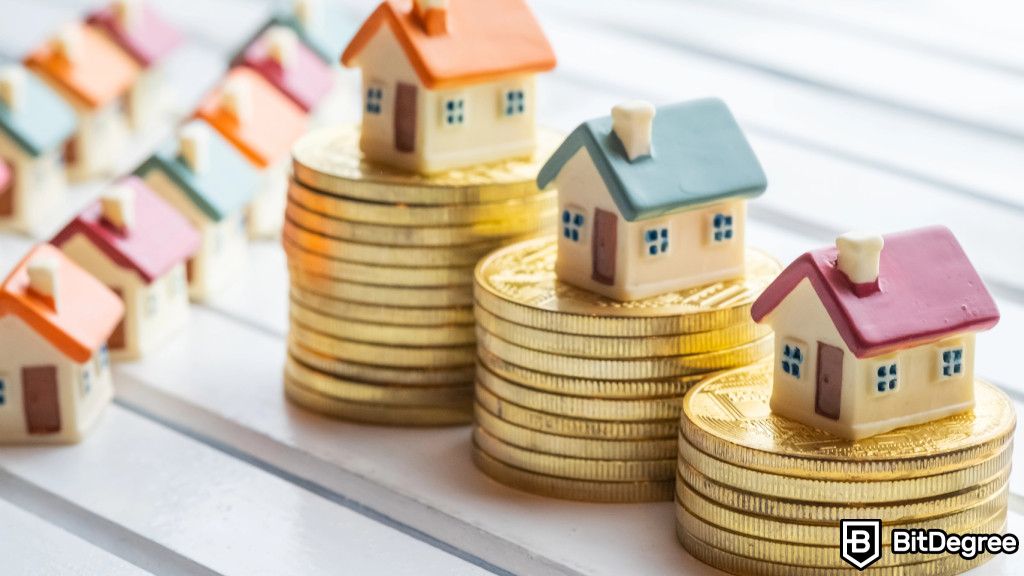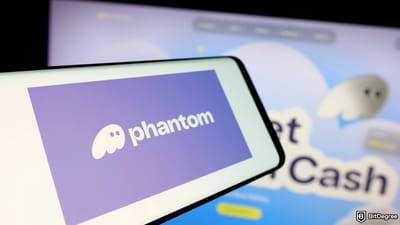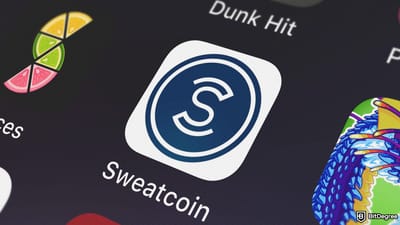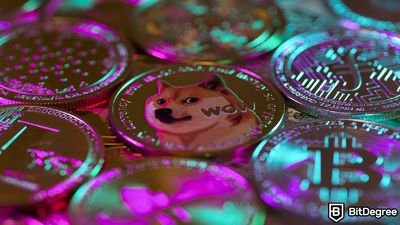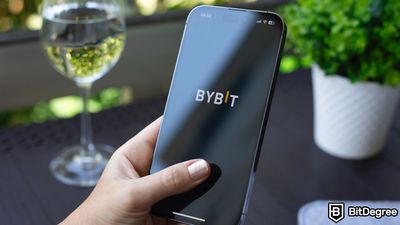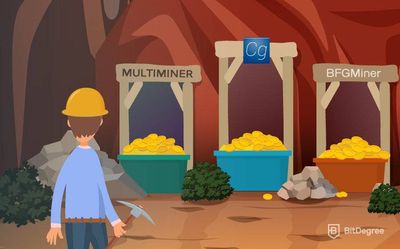Key Takeaways
- Real-world assets (RWAs) are physical or financial assets represented on the blockchain, enhancing liquidity and accessibility;
- The tokenization of real-world assets involves converting tangible assets into digital tokens, offering various benefits and challenges;
- Major crypto exchanges, like Binance, Bybit, and Kraken, play a pivotal role in integrating RWAs into the crypto ecosystem.
Stop overpaying - start transferring money with Ogvio. Sign up, invite friends & grab Rewards now! 🎁
Real-world assets (RWAs) are making waves in the crypto world. If you're wondering "what is RWA in crypto," here's a simple explanation: RWAs are traditional assets, like real estate and art, represented as digital tokens on the blockchain. This process, known as tokenization, unlocks new possibilities and makes such investments more accessible.
Understanding what is RWA in crypto helps you see their transformative impact. The tokenization of real-world assets changes how we interact with these investments by cutting out middlemen, speeding up transactions, and making what was impossible, possible.
Let's dive into the fascinating world of RWAs, exploring what they are and how they are tokenized. We'll see how major exchanges like Binance, Bybit, and Kraken integrate these assets into decentralized finance (DeFi).

Did you know?
Subscribe - We publish new crypto explainer videos every week!
Layer 2 Scaling Solutions Explained With Animations


Table of Contents
- 1. What is RWA in Crypto?
- 2. What Is the Process of the Tokenization of Real-World Assets?
- 3. Differences Between Native and Non-Native Tokens in RWAs
- 4. Role of Smart Contracts in RWAs
- 5. Benefits of Tokenizing Real-World Assets
- 6. Challenges in Tokenizing Real-World Assets
- 7. The Role of RWAs in Decentralized Finance (DeFi)
- 8. Prominent Examples of RWAs
- 8.1. stUSDT
- 8.2. Ondo Finance
- 8.3. Backed Finance
- 9. Conclusion
What is RWA in Crypto?
Real-world assets in crypto projects are the tokenized physical or financial assets that bridge traditional finance and blockchain technology[1]. Getting a firm grip on what is RWA in crypto is crucial as these assets make trading real estate or exquisite art pieces more accessible.
Latest Deal Active Right Now:RWAs include valuable items that make up a large part of the global financial system and are expected to bring economic benefits. To give you some examples, assets such as properties, gold, and government bonds are converted into digital tokens. By breaking huge-size investments into smaller pieces, traders can get their hands on such assets at a more affordable price.
As a result, RWA has really opened the doors for everyone, not just the wealthy investors, to partake in the movement. Imagine if a small investor could own a piece of a building without buying the entire property. Pretty cool, right? It's pretty similar to stocks, where you own a share in a company for physical assets. Plus, the trading process can be done through digital platforms like Binance.
But the examples go beyond what I've shown you. Commodities like gold and silver offer a new level of liquidity and flexibility when tokenized. In other words, they can be traded quicker and easily. Likewise, bonds and equities can be tokenized, as with artworks and intellectual properties.
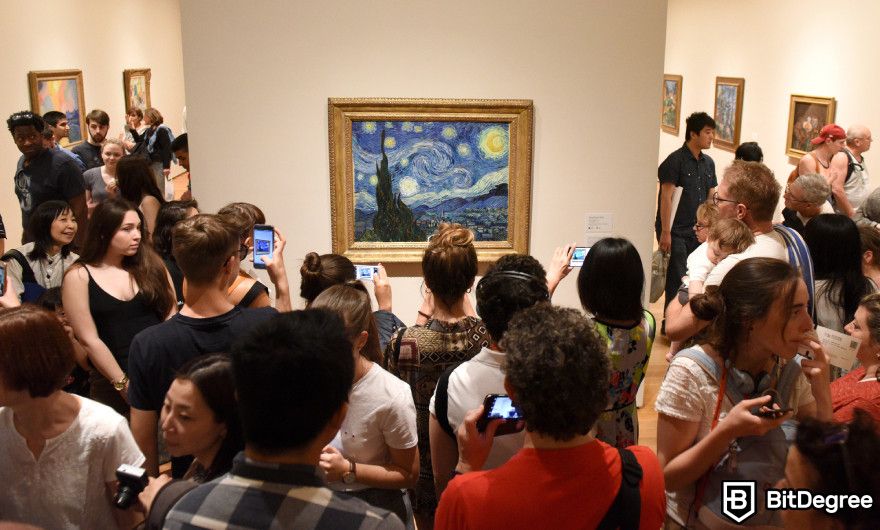
Real-world assets not only democratize investment by lowering entry barriers but also by breaking down regulatory constraints. To illustrate, if you're living in Asia, you can purchase the artwork of your favorite European artist in the form of an RWA crypto project.
If this inclusivity is brought into broader financial services, new opportunities will continue to arise, even leveling up to higher-value assets. Along with the help of blockchain technology, transparency and security in RWA transactions will increase the appeal and trustworthiness of these investments.
In short, grasping what is RWA in crypto lays the groundwork for understanding various types of asset management in general. And most importantly, how real-world assets influence liquidity, transparency, and accessibility.
The scope of RWAs in crypto will continue to expand as the realm of Web3 grows. That said, further in this article, we'll explore some exciting insights into these innovations, along with their unique applications.
What Is the Process of the Tokenization of Real-World Assets?
After learning the answer to the question "What is RWA in crypto?", you might be wondering about the tokenization process of RWA itself.
Well, the tokenization of real-world assets usually involves converting tangible assets into digital tokens on a blockchain, making it more "liquid" and accessible. This process includes several steps: selecting the asset, valuing it, creating tokens, listing them on a platform, and more. Let's walk through the steps together:
Step 1: Asset Selection and Evaluation
Choosing the right asset is crucial. This step starts with picking a suitable asset, like real estate, art, or commodities, and assessing its value. It's all about ensuring the asset is appropriate for tokenization and has market demand.
Step 2: Legal Structuring
Creating a solid legal structure is vital for the successful tokenization of RWAs, as this process involves establishing the legal rights for the digitized assets and deciding how to tokenize them.
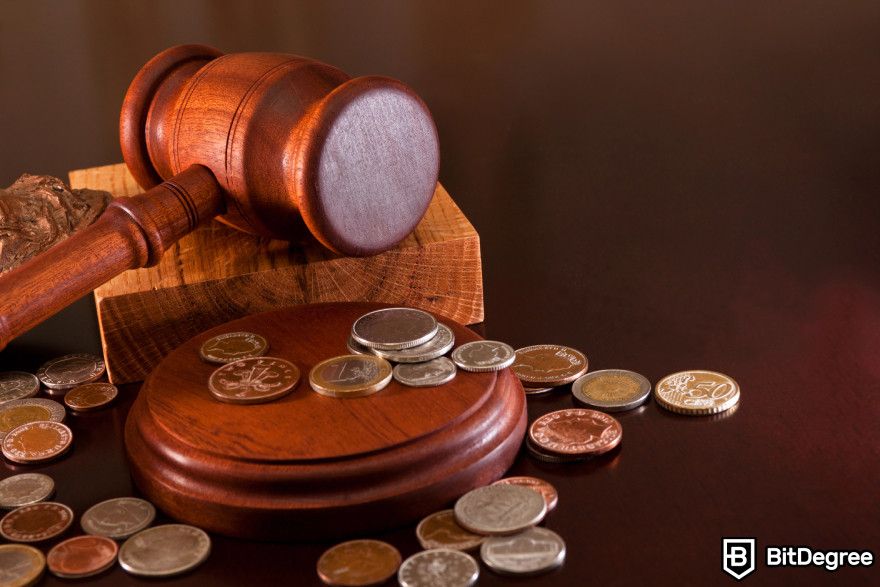
When setting up a legal structure, you have two main options to consider:
- The Tokenized Special Purpose Vehicle (SPV) approach involves holding the asset in a company or trust, which is then tokenized. It's like creating shares for a company but for an asset. This method is preferred because it fits well with securities regulations.
- Direct Asset Tokenization involves tokenizing the asset itself, giving token holders a direct claim. This method is less common due to more significant regulatory hurdles.
Deciding on the appropriate legal structuring approach sets the foundation for the tokenization process. Once the legal framework is established, the next crucial step is ensuring the secure custody of the real-world asset (RWA) and its corresponding security tokens.
Step 3: Custody of the RWA and Security Tokens
Keeping your physical assets safe is essential, and this is where the role of custodians comes in. You have two main options for safeguarding your digital tokens: self-custody or with licensed custodians.
Self-custody means that you manage your tokens using non-custodial hot (Coinbase Wallet) or cold (Ledger Nano X) wallets. With those storage options, the responsibility of keeping your private keys safe falls into your own hands.
Meanwhile, licensed custodians are regulated entities that provide secure storage for your digital assets and ensure they meet all legal requirements. This option offers added security and compliance, but you are not the only one with access to your private keys.
Step 4: Tokenization
This is where the magic happens. The ownership of the asset is converted into digital tokens on a blockchain. These tokens, often called RWA tokens, are launched on platforms like InvestaX or IX Swap, giving proof of ownership and enabling trade.
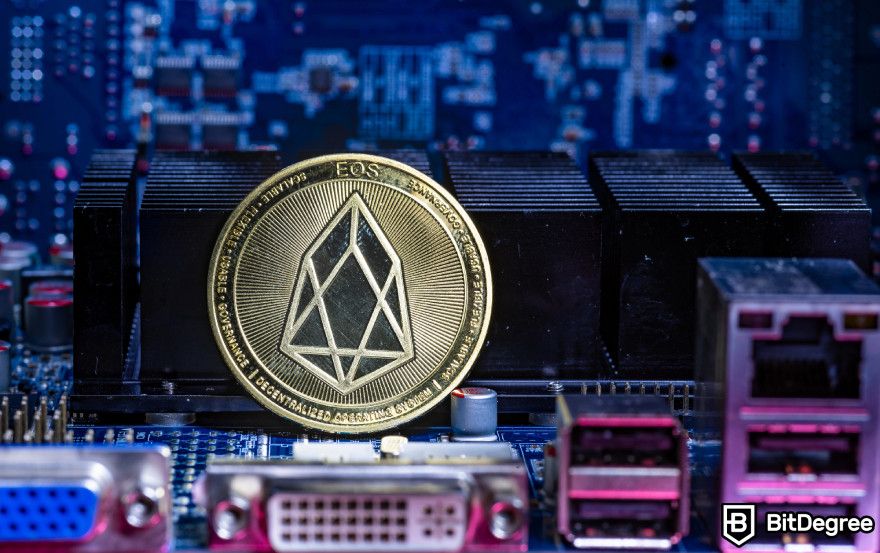
Step 5: Primary Offering
Once tokenized, RWA tokens are listed on primary marketplaces. Investors can join in the initial offering, and Know-Your-Customer (KYC) along with Anti-Money Laundering (AML) checks are mandatory for security tokens. You can then store these tokens in trusted Web3 wallets.
Step 6: Secondary Trading
After the primary offering, RWA tokens can be traded on secondary markets. This includes licensed broker-dealers, centralized exchanges like Kraken and Binance, or decentralized exchanges (DEXs).
|
|
|
|
|---|---|---|
|
|
|
|
|
|
|
|
|
|
| Supported ✅ | Not Supported ❌ | |
| Visit site Read review | See TOP10 Brands Read review |
Table: Comparison between Binance VS Kraken.
Once the assets are listed on those platforms, their liquidity will enhance, thus providing investors with exit opportunities.
Step 7: Ongoing Management
Managing tokenized assets doesn't stop at creation. It also requires complying with legal rules and taxes, valuing regular assets, as well as handling corporate actions like dividends and voting rights. Adhering to existing regulations helps ensure a smooth operation. That's why periodic audits and investor relation management should never be skipped.
By following the step-by-step above, the blockchain industry will continue to uphold a robust and secure method for tokenizing real-world assets, making it easier for investors to access and trade them. As the tokenization of real-world assets becomes more sophisticated, understanding the differences between non-native tokens and native tokens is equally crucial for navigating this evolving landscape.
Differences Between Native and Non-Native Tokens in RWAs
When tokenizing real-world assets, as it involves the blockchain, two types of tokens will usually be produced. The most common ones are non-native tokens. They are created on existing blockchains like Ethereum or Solana, providing lower development costs and faster deployment. These tokens leverage the security and infrastructure of said networks, which is important for RWAs.
However, non-native tokens do rely on the performance and limitations of their host blockchains. That said, many tokenized assets are also minted on the aforementioned blockchains. For example, USDT (Tether) on Ethereum is a non-native token used for various transactions, including those involving tokenized RWAs.
Meanwhile, native tokens are built on their own blockchain, offering more control and customization. This can be useful for specific RWA crypto projects that require unique features and scalability. Examples of native tokens include Bitcoin (BTC) and Ethereum (ETH).
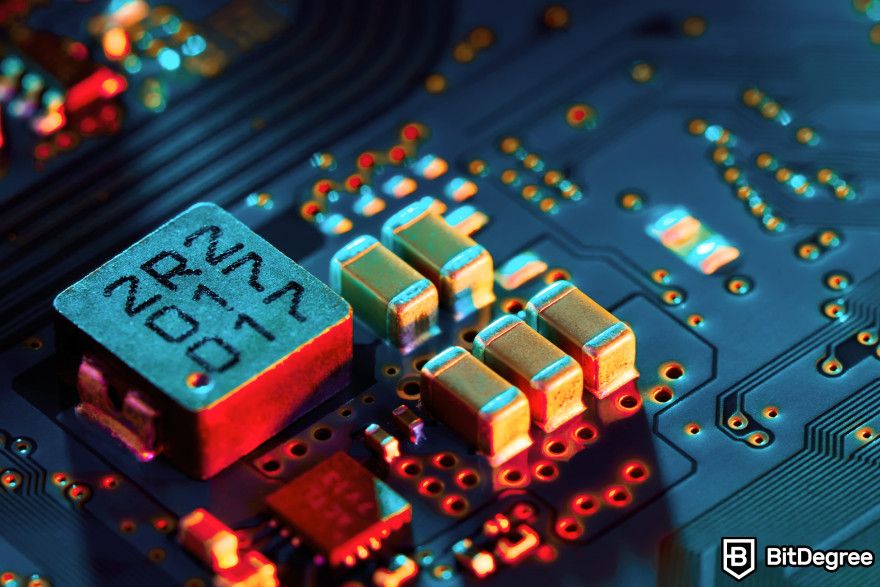
The biggest advantage of native tokens is that they offer tailored functionalities specific to the needs of the tokenized asset. However, developing and maintaining a native blockchain involves higher costs and independent security measures, making it a more resource-intensive option.
As expected, there are some trade-offs when choosing between non-native and native tokens. Perspective-wise, non-native tokens offer the convenience of existing infrastructure, while native tokens provide full ecosystem control.
It's vital to get a clear idea of these differences if you're a stakeholder in the RWA ecosystem, as they influence the security, scalability, and cost-effectiveness of the tokenization process. Undoubtedly, this will give you a much better understanding of what is RWA in crypto.
Now that we've explored the types of tokens used in the RWA ecosystem, let's understand the role of smart contracts in managing these assets effectively.
Role of Smart Contracts in RWAs
Smart contracts are self-executing codes on blockchains like Ethereum[2], composed of state variables and functions. These contracts automate the creation, management, and transfer of tokenized assets, making them vital in the field of real-world assets. To fully grasp what is RWA in crypto, it is crucial to recognize how smart contracts ensure the seamless operation and security of digital agreements.
The applications of smart contracts are widespread in RWAs. For example, they can automatically transfer the ownership of a tokenized real estate property once payment conditions are met. They can also manage rental agreements by automating the process for payments.
In escrow services, smart contracts hold the funds until transaction conditions are fulfilled, providing a secure mechanism for large asset transactions. On the other hand, in decentralized finance, smart contracts enable RWAs to be used as collateral for loans, integrating them smoothly into the financial ecosystem.
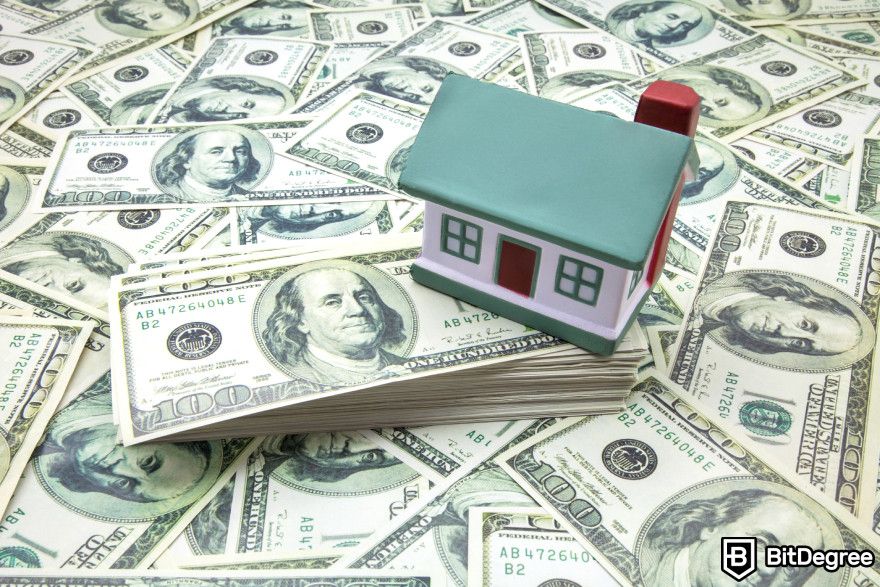
Smart contracts offer potentially massive benefits, like increased efficiency, cost savings, and enhanced security. By automating transactions, they reduce processing times and administrative overhead, streamlining asset management. Further, the transparency and immutability of blockchain ensures that all contract terms are clear and tamper-proof, building trust among stakeholders.
However, you can also come across a few hurdles when using smart contracts, including potential code vulnerabilities and varying legal recognition across jurisdictions. Ensuring robust auditing and compliance with legal standards becomes crucial for successfully implementing RWA tokenization projects.
By understanding such processes and examples, you can see how RWAs bridge traditional finance and blockchain technology, revolutionizing how we interact with tangible assets. Now that we've got that covered, let's talk about the benefits and challenges of tokenizing real-world assets.
Benefits of Tokenizing Real-World Assets
The growing curiosity around what is RWA in crypto further highlights how such an innovative approach is transforming traditional finance. It's visible how the tokenization of RWAs brings numerous advantages to both investors and the broader financial market.
For starters, tokenization boosts liquidity by allowing fractional ownership and easy asset transfer. This is because blockchain and smart contracts make transactions smoother by cutting out intermediaries and lowering costs. This turns tokenized assets into a 24/7 global market, breaking down the barriers for global investors who now can trade anytime, anywhere.
Tokenization of real-world assets also lowers the bar for investing, letting everyday folks buy into high-value markets like real estate and fine art. Thanks to real-world asset crypto projects, financial opportunities have become more inclusive and accessible. As a result, not only the privileged ones can have a role in the market.
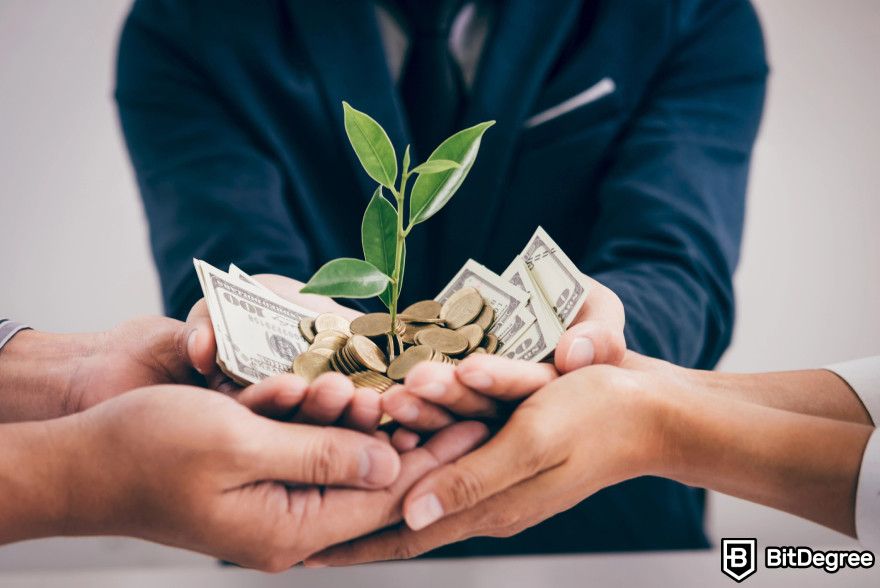
Additionally, blockchain tech ensures that all transactions are transparent and secure, cutting down on fraud and errors. Tokenization of real-world assets helps create clear and unchangeable records of ownership, boosting investor trust. This level of transparency and security makes managing assets much easier and more reliable.
Further, tokenization creates new ways to earn money from unique assets like intellectual property and luxury items. Breaking down ownership into smaller parts makes these usually illiquid assets more accessible. Artists, inventors, and owners can tokenize their creations, making the market more dynamic and liquid.
Finally, partnerships between the stakeholders in the ecosystem (specifically, CEXs and DEXs) are crucial in promoting this innovative financial model. They not only facilitate the trading of tokenized assets but also function as a marketing engine. The more words get out, the more people will be interested in becoming part of the growing real-world asset market.
Challenges in Tokenizing Real-World Assets
Tokenizing real-world assets in crypto projects does offer a lot of promises, but it's not without its hurdles. In the context of RWA in cryptocurrency, several key challenges become evident.
First and foremost, dealing with legal and regulatory issues can be a real headache. Different jurisdictions have different rules and regulations, making creating a standardized framework for RWAs tough. This lack of standardization limits the widespread adoption of tokenized RWAs, especially in highly regulated countries like the US. Establishing a universal framework is challenging but necessary for the global adoption of RWAs.
Navigating geographical laws can be complex and time-consuming. Plus, getting the courts to accept NFTs as proof of ownership is another major hurdle. Despite that, these challenges must be addressed to effectively integrate traditional assets into the blockchain ecosystem.
Further, digital assets are always at risk of fraud and hacking. Therefore, it is essential to follow the best blockchain security practices, such as ensuring the smart contracts used are truly secure. Moreover, smart contracts play a key role in automating and conceiving tokenization. Thorough testing needs to also be conducted regularly to avoid vulnerabilities.
For safeguarding RWAs in crypto projects further, reliable custody solutions like Ledger and Trezor are also necessary to protect the physical assets backing the tokens. Maintaining the security of token contracts is crucial to prevent unauthorized transfers and asset loss.
|
|
|
|
|---|---|---|
| 24-word seed phrase or Nano S Plus | 12-, 20-, and 24-word seed phrase | |
| You | You | |
| Visit site Read review | See TOP10 Brands Read review |
Table: Ledger VS Trezor comparison.
Similarly, building trust and getting people to adopt tokenized assets is a big challenge. Many investors are not familiar with this new technology and may be hesitant to jump on board. Thus, educating the market about the benefits and security of tokenizing real-world assets is critical to broader acceptance.
Additionally, ensuring enough market liquidity and demand for these tokenized assets is crucial for their success. It's important to prove the legitimacy of tokens and establish clear and detailed rights for token holders to build trust.
By addressing these challenges, the blockchain industry should be able to develop more robust and secure methods for tokenizing real-world assets, paving the way for greater integration between traditional finance and digital assets.
The Role of RWAs in Decentralized Finance (DeFi)
Integrating real-world assets into the crypto world, such as DeFi, reshapes the crypto landscape by making tangible assets more "liquid" and accessible. Exploring what is RWA in crypto reveals how these assets open new investment opportunities for a broader audience. Let's discover how RWAs are transforming DeFi and the opportunities they present.
RWAs are increasingly integrated into DeFi platforms, which is a notable development. By tokenizing real-world assets, these platforms allow for fractional ownership and easier transferability.
High-value assets, once accessible only to a few, can now be owned and traded by a broader range of investors. By tokenizing assets like real estate or commodities, DeFi platforms create new investment opportunities and make traditionally exclusive markets more accessible.
Another significant benefit of integrating RWAs into DeFi is the ability to generate crypto yield through traditional investments. Assets such as real estate, commodities, and bonds can be tokenized and used within DeFi protocols to earn returns.
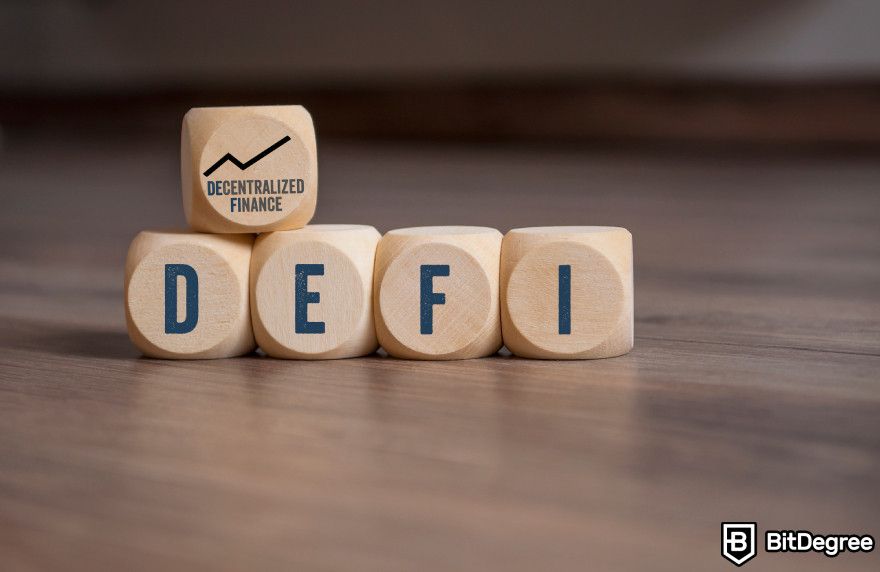
For example, platforms like MakerDAO and Maple Finance enable users to leverage these tokenized assets for lending, borrowing, and earning interest, creating new income streams from traditionally illiquid assets.
Several DeFi projects are leading the way in integrating RWAs, showcasing innovative approaches to bridge traditional finance with blockchain technology. To truly grasp what is RWA in crypto, examining the following examples provides valuable insights:
- MakerDAO. MakerDAO uses tokenized real-world assets in crypto to back its stablecoin, DAI, enhancing stability and reducing volatility. In July 2024, they announced a $1 billion investment in tokenized U.S. Treasury products. This move supports loans using tokenized real estate as collateral, adding reliability and security to their operations.
- Creditcoin (CTC). Creditcoin facilitates decentralized credit transactions by creating a public ledger of credit activities. This ledger can be checked against real-world financial data to boost transparency and reliability in credit transactions, helping to build more trust in the credit space.
- Maple Finance (MPL). Maple Finance connects institutional capital markets to crypto by integrating RWAs for lending and borrowing. Institutional borrowers can get liquidity through decentralized lending pools on Maple Finance.
- Goldfinch (GFI). Goldfinch aims to bring decentralized credit to the real world using RWAs as collateral. By using real-world financial assets, Goldfinch makes credit more accessible in the DeFi space. This not only opens up credit to more people but also strengthens the stability and security of DeFi loans.
Getting a grip on these examples can help us see how different platforms successfully integrate RWAs into DeFi, enhancing the stability, transparency, and accessibility of financial services. More importantly, these insights provide better clarity on what RWA is in crypto.
Prominent Examples of RWAs
Integrating real-world assets (RWAs) into the crypto ecosystem paves the way for innovative financial products and investment opportunities. When exploring what is RWA in crypto, consider these prominent examples:
stUSDT
stUSDT is the first RWA platform on the TRON network, boasting over $1.4 billion in Total Value Locked (TVL). Users can stake USDT on the platform and earn an annual percentage yield (APY) of 4.18%. The stUSDT token acts as a receipt, representing investments in real-world assets like government bonds.
Managed by the RWA DAO, a decentralized autonomous organization that integrates real-world assets into the blockchain ecosystem, these investments offer a stable income stream, bridging traditional and decentralized finance.
Ondo Finance
Ondo Finance is getting noticed with a TVL of around $221.42 million. It invests in highly liquid exchange-traded funds (ETFs), helping stablecoin holders earn yields on their assets. Users swap stablecoins for USD, which is then used to buy assets. Based on the risk level, Ondo offers APYs from 4.5% to 7.76%.
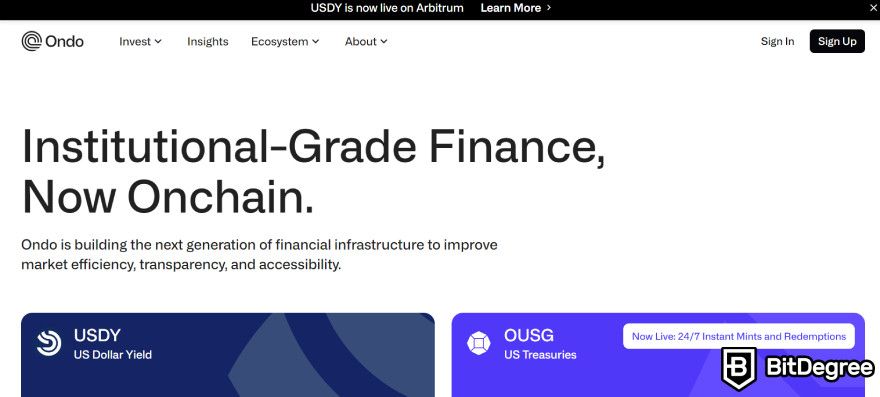
In August 2023, Ondo launched USDY, a tokenized note backed by short-term US Treasuries and bank deposits. This gives global (non-US) investors a secure, yield-bearing option to stablecoins.
By July 2024, Ondo expanded USDY by launching it in the Cosmos ecosystem via the Noble platform, making it more accessible and integrated within DeFi. This move boosts USDY's utility and adoption across different blockchains.

- Secure and reliable
- Accepts fiat currencies
- Lots of trading options
- Reputable exchange
- Accepts fiat currencies
- Offers various trading options

- Huge trading variety
- Regulation-compliant around the globe
- Fair trading fees
- Beginner-friendly
- A wide array of features
- Vast number of different crypto coins & tokens

- Beginner-friendly
- Secure
- Decent trading and withdrawal fees
- Crypto.com Visa Card
- Automated tools & bots
- Ecosystem synergy with CRO
Backed Finance
Backed Finance is a tokenized structured product that tracks publicly traded securities. Each bToken is backed 1:1 by an equivalent security held by a regulated custodian.
Initially, only KYC-verified investors could acquire bTokens directly. Now, non-KYC investors can access them through secondary markets like decentralized exchanges (DEXs).
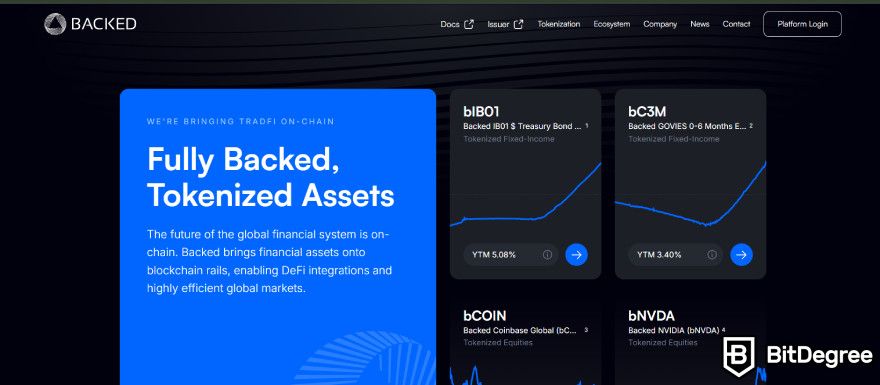
One notable feature of this platform is how it opens up investment opportunities, especially for individuals in emerging markets. Backed Finance offers tokenized fixed-income products like bC3M and bIBTA and tokenized equities such as bNIU and bCOIN. This approach lowers investment barriers and broadens access to traditional financial assets.
With these examples, you should be able to see how the role of tokenization of real-world assets is growing in the DeFi space. By making traditional investments more accessible and transparent, platforms like stUSDT, Ondo Finance, and Backed Finance are contributing to the evolution of the financial ecosystem.
Find more RWA crypto projects in this article.
Conclusion
The integration of real-world assets (RWAs) on the blockchain is transforming finance by enhancing liquidity, enabling fractional ownership, and boosting transparency. Learning what is RWA in crypto helps us see how tokenizing assets like real estate, commodities, and art lowers entry barriers and allows global participation.
Platforms like Bybit, Binance, and Kraken are driving this shift, making RWAs central to decentralized finance. Despite regulatory and security challenges, RWAs offer significant benefits.
As blockchain technology advances, RWAs will bridge traditional finance with the digital economy, helping build a more inclusive financial future. Hopefully, this article has given you a crystal-clear picture of what is RWA in crypto and how it revolutionizes our interaction with tangible assets and integrates traditional finance with blockchain technology.
The content published on this website is not aimed to give any kind of financial, investment, trading, or any other form of advice. BitDegree.org does not endorse or suggest you to buy, sell or hold any kind of cryptocurrency. Before making financial investment decisions, do consult your financial advisor.
Scientific References
1. D. Hou, et al: 'An on-chain trading model of real world asset backed digital assets';
2. J. Kose, K. Leonid, S. Fahad: 'Smart Contracts and Decentralized Finance'.
